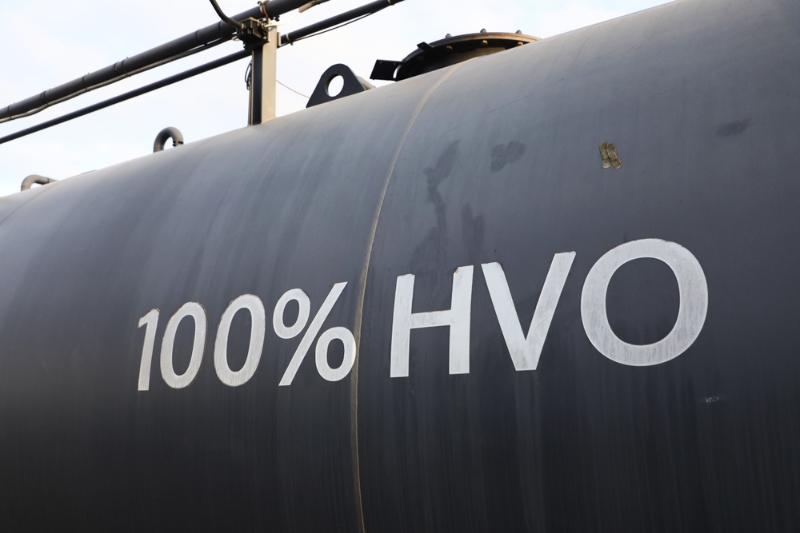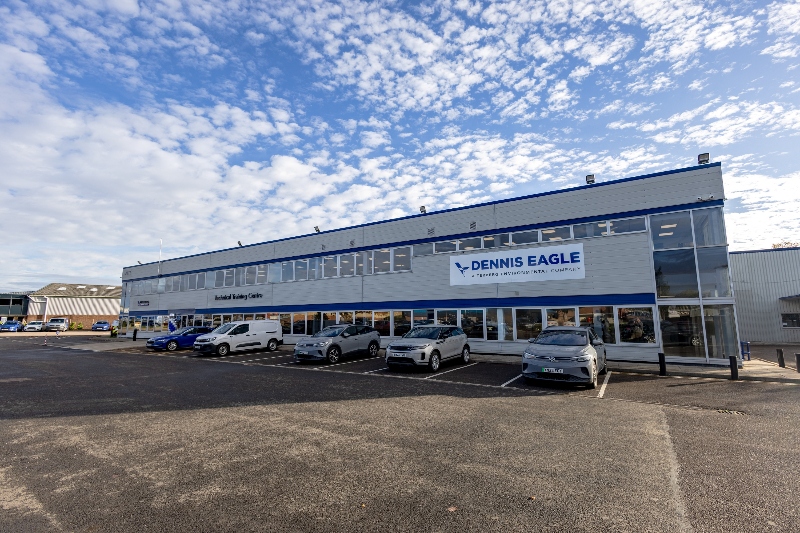Funnily enough, winter maintenance in the UK remains a 'hot' issue, reports Ann-Marie Knegt. Unlike several of our continental counterparts we can never count on long cold winters - but when the cold strikes the grit hits the fan!
<p>On average the salting of Britain's roads costs over a £150 million per year. Most of this is actually preventive spreading, without the current winter maintenance practice, delays would cost about £2 billion.</p>
<p>However, in this era of 'Best Value' councils are always looking for a way to provide the best service, save the environment, save costs and protect themselves against litigation.</p>
<p>When it comes to the question of which salt product to use, there is no 'one-size-fits-all' solution and, at the moment, there are very few research results accessible for public use.</p>
<p>In 2001 the NSSRG, a UK-based steering group which includes both manufacturers and councils, commissioned TRL to undertake independent salting trials to advance the understanding of salt spreader performance, with different salt systems and effective de-icing trials of highways under traffic.</p>
<p>The first trials of this two-phased research have just been completed but the results are only available to the 105 participating councils and industry members. However, one of the conclusions the NSSRG has drawn is that the use of 6.3mm salt and 10mm salt should continue as a precautionary treatment.</p>
<p>The NSSRG website states: “Ten mm salt has advantages in terms of increasing particle momentum for use on roads where wide spreading requirements and snow treatment are required (i.e. wider than 2 lanes) 6.3 mm has advantages because it enters into solution twice as fast as 10mm salt. The spread width can also be controlled better than 10mm salt. The effectiveness of each salt grade also depends on the amount of fines and the moisture content.”</p>
<p>The salt solution</p>
<p>Andrew Lupton, MD of spreader manufacturing company Econ, has been at the forefront of recent developments as a member of the NSSRG and he is involved in European research on winter maintenance.</p>
<p>“What is clear from our membership of these committees is that the UK presents very different requirements from mainland Europe,” he reports.</p>
<p>He sees the climatic conditions, the number of road users in Britain and their requirements and expectations as the main reasons for this.</p>
<p>“Winter maintenance has been pushed up the agenda of many LAs and as a result the market has become very receptive for developments. In conjunction with this the proliferation of various salt products has enabled us to offer a far broader range of equipment to the customer,” he comments.</p>
<p>Andrew sees a definite move on the market to a 6mm salt that the De-Icing Business (Salt Union) has just re-branded as Thawrox Plus, in combination with an ABP called Safecote.</p>
<p>According to Allan Sheen, Commercial Manager for the De-Icing business and also a member of the NSSRG, over 50,000 tonnes of this salt have already been spread across the UK, with 35 authorities having conducted independent trials comparing untreated 6mm rock salt with the relatively new product. Several councils were able to reduce their spread rate by 20% because of the materials' accurate spread rate.</p>
<p>“The trials we performed were similar to those performed by TRL and NSSRG. We found that by using Safecote there was an 82% reduction in corrosion and a higher residual salt level on the road,” says Allan.</p>
<p>He says that the effects of spreading Safecote in comparison with pre-wet were similar, but that LAs would not have to invest any additional equipment.</p>
<p>“A saturator and a brine tank will cost around £30,000 pounds and to equip a spreader with a brine tanks will cost about £8,000 more per vehicle. Don't get me wrong we also have customers, especially in the east of the country who use fine 3mm salt and who swear by pre-wet. I think that it depends on the individual climate of the county in which the council is operating.”</p>
<p>Allan sees this Best Value approach result in a definite eastwest divide in the UK. In eastern parts, very dry and frosty nights occur more often than in the west. The climate is more like that of Scandinavia and The Netherlands. The use of prewet under those circumstances is an ideal way of salting the road, because there is less moisture in the air for the salt to start working unlike in the Atlantic climate.</p>
<p>Andrew Lupton agrees with Allan: “There is not just one solution that will fit anyone. Pre-wet is a very good technique but it is expensive. I think Safecote is probably not as good as pre-wet, but it is more affordable. The initial capital investment to convert to pre-wet is high and all vehicles have to be equipped with brine tanks. When converting to Safecote you only have to change the calibration of the spreader.”</p>
<p>He points out that another reason for choosing a course 6mm product with Safecote is to create a skid-resistant environment.</p>
<p>According to Andrew products it is especially attractive to big urban councils.</p>
<p>“My customers give me the impression that they find that the moisture creates a double jeopardy for drivers, for instance, at roundabouts where people brake a lot and where there are cambers in the road. Courser products like Thawrox Plus create a skid-resistant environment.”</p>
<p>Allan adds that bigger LAs like it because it also reduces corrosion in street furniture.</p>
<p>Spraying brine</p>
<p>Andrew Bunce, sales director of Bunce is the UK distributor for Danish spreader manufacturer Epoke. He explains that 85% of the spreaders that leave the factory are equipped with prewetting systems and have done so in the last 15 to 20 years.</p>
<p>However, he points out that several authorities in Denmark have taken things a step further and have been spraying pure brine on the roads since the 1980s.</p>
<p>“The practice has been used with excellent results, particularly on footpaths and cycleways. More recently, there have been authorities which have been treating their motorways in this fashion,” he reports.</p>
<p>The brine is applied to the road via a spray bar in most cases. However sometimes a modified spinner disc is employed.</p>
<p>“There are spreaders available that can spread dry salt, prewetted salt or pure liquid. This gives the operator the choice of the best treatment according to conditions,”</p>
<p>Andrew sums up the advantages of using brine. “When using brine you require less salt than when using pre-wet, hence it is more environmentally friendly. Brine acts more quickly than dry material and does not need 'traffication' to activate it. This is particularly important on footpaths and cycleways. The coverage is more even than with dry material.</p>
<p>Furthermore it is cleaner - i.e. salt is not walked into doorways and therefore onto carpets when used on footways.” The technique does have its disadvantage - it functions better as an anti-iceant than as a de-iceant on snow or hardpacked ice.</p>
<p>Andrew puts this down to the process when - as brine melts the ice - the solution will become more and more dilute up to a point where it will no longer sufficiently suppress the freezing point or will prevent refreezing.</p>
<p>“In Scandinavia they have addressed this problem by equipping the tractors that carry the sprayer with a frontmounted hydraulic sweeper to remove the snow from the surface to a 'blacktop' prior to spraying. In these conditions the actual treatment speed would actually be greatly reduced and would be much slower than treating snow with actual rock salt. This is worth bearing in mind as, at the moment, people act reactively rather than in a precautionary way,” he concludes.</p>
<p>New technologies</p>
<p>In Scandinavia the Swedish State High Ways Department and the Norwegian Public Roads Administration have been pioneering spreading technology for several years. Apart from just thinking about De-Icing and Anti-Icing the Administration has also thought about applying abrasives for an even safer result and for a more environmentally-friendly effect.</p>
<p>The Administration tried and tested several new techniques in research it began in 1997.</p>
<p>The warm wetted sand method involves adding hot water to sand. The water forms a film around the sand grains. When sand then leaves the spreader and falls on to the frozen road surface, the hot film causes a short melting effect. The mixture then cools down and freezes onto the road in lumps. The result is that the road has an abrasive and rough texture.</p>
<p>The material is delivered to the road service with a reconstructed truck spreader with a dropside body and is now produced by the Swedish company Innowajet AB. The Friction Maker is powered by double 110KW diesel burners. The sand leaves the spreader tray in conjunction with water with a temperature of 90° Celsius.</p>
<p>A spokesman for Innowajet explains: “The results are better for the environment, partly because salt is no longer used and partly because the treatment has considerably better durability.” The system can be mounted on an ordinary sand truck and it is powered by the hydraulic power of the vehicle. The Friction Maker is delivered complete with water tank and nozzle manifold for the hot water.</p>
<p>“When winter conditions do not prevail, the unit can be converted to in to a conventional high pressure hot water washing unit and can therefore be utilised 12 months a year,” the spokesman concludes.</p>
<p>After the development of the Friction Maker the organisations went over to the next-step reports, Nordic Road and Transport Research Issue 3 2004.</p>
<p>Tests were carried out to discover if the use of pre-wetted salt in combination with the hot water and sand unit could be an anti-icing or de-icing alternative to the traditional pre-wet method of adding brine to salt.</p>
<p>The tests were performed over several weeks in the winter of 2004 and the results clearly pointed in favour of the hot wetted sand method due to its increased friction and a more rapid effect.</p>
<p>The researchers found that, when used as a preventative method, the same amount of residual salt was left on the road as with the conventional method. They decided that this new technique could also be used as a preventative method.</p>
<p>Furthermore, they concluded that the system was worth further research; researchers found no negative aspects to the technique.</p>
<p>For future use, several aspects of this technique will still have to be researched - i.e. chemical acceleration, quantity of fluid, reduction in the amount of salt and consequences for traffic and temperature limits.</p>
<p>Do you want to know more about the technologies? Please visit: www.innowajet.se or www.vti.se/Nordic/default.htm</p>







